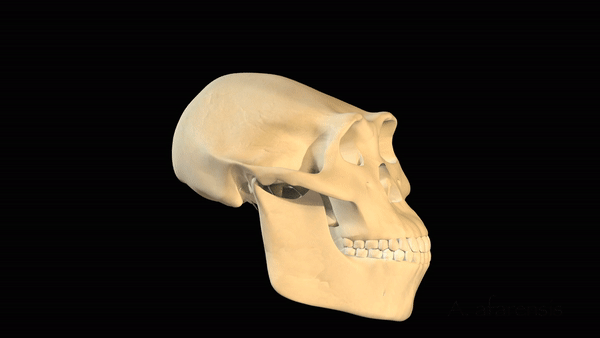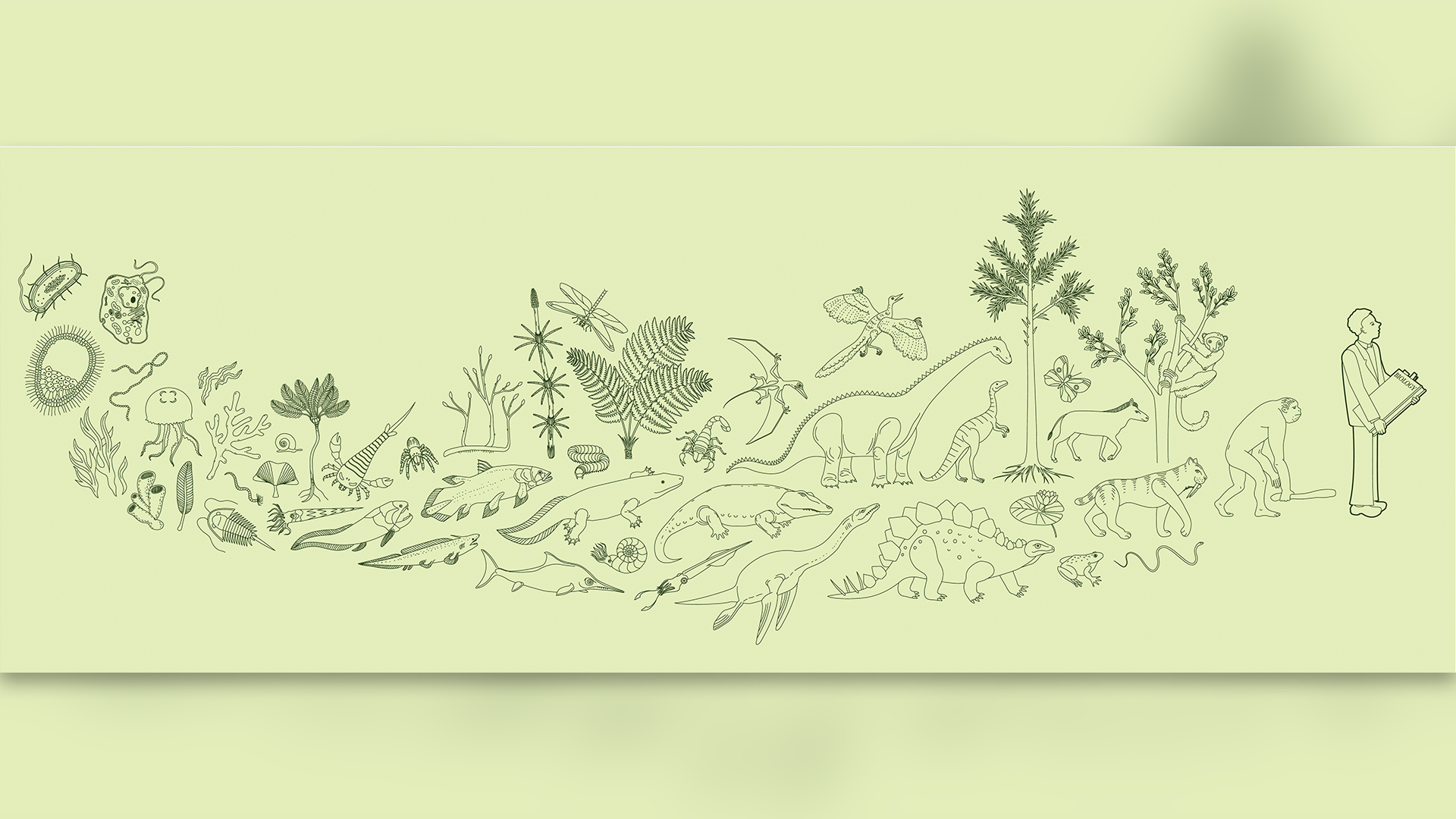When did Homo sapiens first appear?
What's the oldest fossil evidence humans have for our species?
The origin of our species, Homo sapiens, has puzzled paleoanthropologists for generations — and finding the answer has only gotten more complicated with the discovery of far-flung fossils and the advent of genetic analysis. So where and when did our ancestors first appear?
Currently, the answer is still up for debate: Researchers have so far unearthed 300,000-year-old fossils attributed to our species, while some scientists trace modern humans' origins to 1 million years ago. One of the reasons for the lack of clarity is the definition of species itself: what do we mean by Homo sapiens?
What is a species?
The biological species concept is the most well-known — members of a population that can interbreed are considered one species. Thanks to DNA analysis, in 2010, scientists discovered that Neanderthals and humans had interbred in Europe and the Middle East, with more recent research suggesting they paired up as far back as 250,000 years ago. Another close relative, the Denisovans from Asia, also interbred with humans at least 50,000 years ago. Some anthropologists now consider Neanderthals and Denisovans to be the same biological species as we are — Homo sapiens — but others maintain each is a separate species within the Homo genus.
But since scientists have not been able to extract DNA from older specimens in Africa, where DNA does not preserve well past about 20,000 years, paleoanthropologists use an additional concept to try to understand the evolution of our species. In the phylogenetic, or family-tree species concept, a particular group of physical traits — such as a rounded braincase, a high forehead and a prominent chin for humans — is used to identify members of a species. This is the main way that paleoanthropologists classify and understand the fossils of our hominin ancestors. Additional evidence, such as the stone tool type found with the fossils, can suggest which species an individual belonged to.
The current challenge in paleoanthropology is in figuring out how fossils, archaeology and DNA evidence can be brought together to understand where we came from.
Related: What did the last common ancestor between humans and apes look like?
New fossils push back dates
So what is the oldest-known fossil belonging to a modern human? Chris Stringer, research leader in human evolution at the Natural History Museum in the U.K., told Live Science in an email that "in my view, the oldest known fossil showing a morphological pattern similar to extant H. sapiens is the Omo Kibish 1 skeleton from Ethiopia, [which is] about 230,000 years old." This fossil skull has a tall, globe-shaped head and a human-like chin, which has led researchers to call it the oldest known Homo sapiens from East Africa.
Get the world’s most fascinating discoveries delivered straight to your inbox.
But Stringer also pointed out that many researchers accept a fossil from South Africa called Florisbad, dating to 260,000 years ago, and fossils from Morocco as examples of early Homo sapiens.
"The oldest forms attributed to our species are the fossils from Jebel Irhoud in Morocco, dated to around 300,000 years ago," Jean-Jacques Hublin, a paleoanthropologist at the Collège de France who dated the fossils, told Live Science in an email. Fossils from the site included several skulls with long braincases and heavy brow ridges — features of our older ancestors — but with faces, jaws and teeth that are similar to Homo sapiens.
"It should be stressed," Hublin said, "that these humans were substantially different from present-day humans. Evolution has never stopped."
"The Jebel Irhoud fossil is widely — though not by everyone — considered to be an example of a very early Homo sapiens," said Eleanor Scerri, leader of the Pan African Evolution Research Group at the Max Planck Institute of Geoanthropology in Germany. But it is very difficult to determine what early members of our species should look like, Scerri told Live Science in an email, because different features likely arose at different times in different groups, and then eventually coalesced through gene flow.
As there are archaeological examples of modern cognition, such as tools and art, that appear around the same time as Jebel Irhoud, "it's important to look at different sources of information here, not just fossils" when classifying ancient hominins into species, Scerri said.
Do modern African genetics suggest an earlier origin?
Even if we take the earliest fossil evidence and earliest behavioral evidence at face value, the date of roughly 300,000 years ago for the origin of our species might still be too recent.
"For me, Homo sapiens evolved between 1 million and 700,000 years ago in Africa," John Hawks, a paleoanthropologist at the University of Wisconsin–Madison, told Live Science in an email. "We know the genetic divergence of African from Neandertal-Denisovan ancestors was around 700,000 years ago," Hawks said, and there is additional genetic research suggesting differentiation of ancestral African groups around 1 million years ago.
That 2023 research, which was published in Nature, worked backward from the genes of nearly 300 modern people from Africa, modeling a scenario of evolution and continuous gene flow around the continent. In essence, their "population fragmentation-and-coalescence model" suggests there was an ancestral human population around 1 million years ago in Africa that split up into South, West, and East Africa groups, all the while maintaining their genetic links to one another.
If this deep genetic model is correct, our ancestors might not have originated in one specific place and time but evolved slowly throughout Africa over 1 million years.
An incomplete answer
The question of when our species evolved is unlikely to have a clear answer anytime soon.
"Every single part of that question is being questioned," paleoanthropologist Sang-Hee Lee of the University of California at Riverside told Live Science in an email, including "the definition of Homo sapiens, the definition of a 'first', and the definition of 'appearance.' These are exciting times."
Scerri noted that more fossils, archaeology and ancient DNA from different regions are necessary to "understand which regions in Africa played a role in our origins, what the role was, if different regions played a greater role than others, whether they were all roughly equal, which ecosystems were involved, and even if there were areas that were simply left out of the story."
Stringer agreed. "We need much more, and better quality, evidence" for pushing forward on questions about the origin of our species, Stringer said. "Even Africa has good fossil evidence from less than 10% of its area."

Kristina Killgrove is a staff writer at Live Science with a focus on archaeology and paleoanthropology news. Her articles have also appeared in venues such as Forbes, Smithsonian, and Mental Floss. Kristina holds a Ph.D. in biological anthropology and an M.A. in classical archaeology from the University of North Carolina, as well as a B.A. in Latin from the University of Virginia, and she was formerly a university professor and researcher. She has received awards from the Society for American Archaeology and the American Anthropological Association for her science writing.





